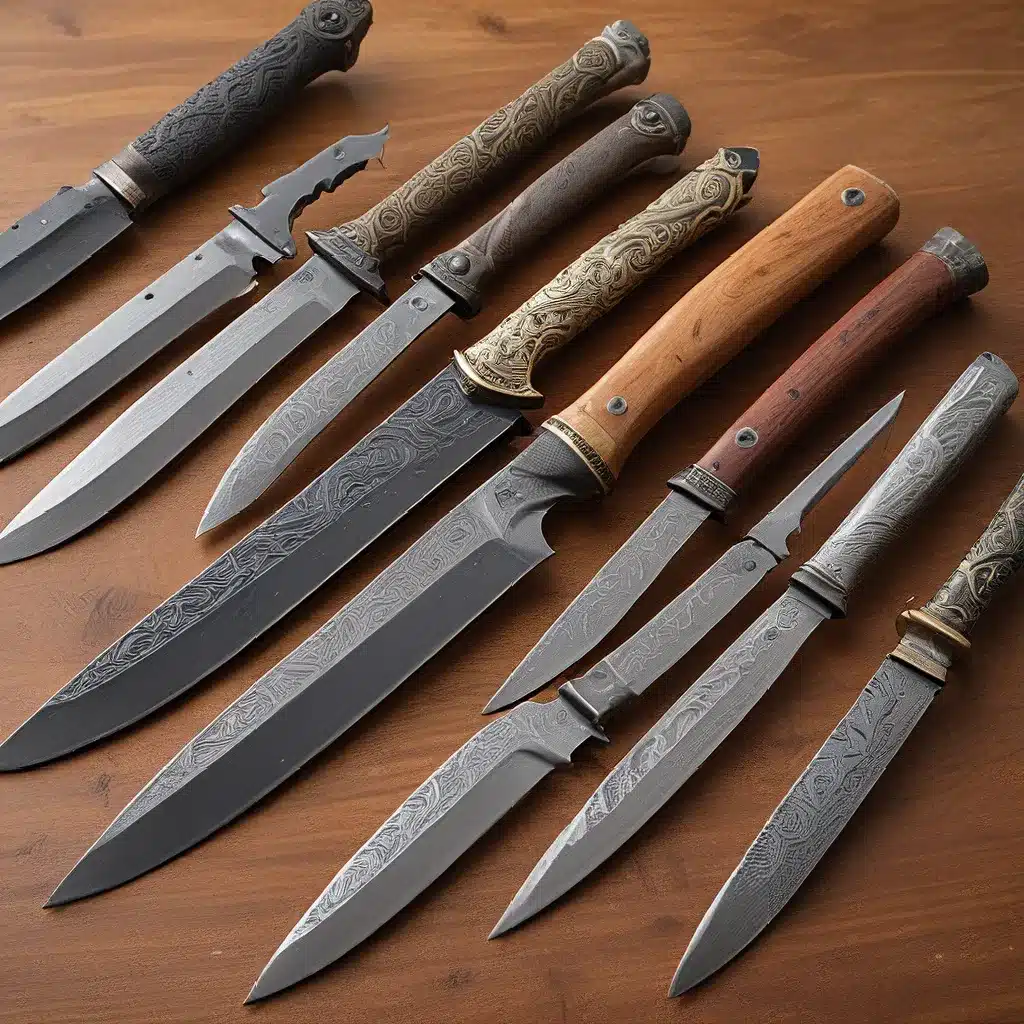
As a self-proclaimed “knife nerd,” I’ve always been fascinated by the rich history and innovation that lies within the world of collectible knives. From the legendary Damascus steel of ancient times to the cutting-edge MagnaCut alloys of today, the evolution of knife steel is a tale filled with brilliant minds, passionate artisans, and a relentless pursuit of perfection.
Recently, I stumbled upon a groundbreaking new book that delves deep into this captivating story. “The Story of Knife Steel: Innovators Behind Modern Damascus and Super Steels” by Larrin Thomas is a comprehensive exploration of the personalities, breakthroughs, and dramas that have shaped the knife industry. Intrigued, I dove headfirst into this literary adventure, and let me tell you, it’s been an eye-opening experience.
Uncovering the Secrets of Legendary Steel
One of the highlights of this book is the way it unravels the mysteries surrounding Wootz, the renowned sword steel of the past. As Larrin explains, the origins of this legendary material can be traced back to a collaboration between a scientist, Michael Faraday, and a knifemaker, James Stodart, who were both fascinated by the unique properties of Wootz.
“The very first experiments on steel alloying came from a scientist Michael Faraday and a knifemaker James Stodart were analyzing and trying to recreate Wootz, the legendary sword steel.”
Through their groundbreaking work, they laid the foundation for our modern understanding of steel, paving the way for countless innovations to come. It’s a captivating story of scientific curiosity and the relentless pursuit of knowledge, all centered around the humble, yet extraordinary, knife.
The Rise of Custom Knifemaking
As I delved deeper into the book, I was struck by the fascinating evolution of the custom knifemaking industry. From the pioneering work of legends like Bob Loveless and Mel Pardue, to the rise of modern innovators like Chris Reeve, the book chronicles the emergence of a thriving community of passionate artisans.
What’s remarkable is how this niche market has grown to capture the imagination of collectors and enthusiasts worldwide. As Larrin points out, the development of forge welding and Damascus patterning techniques has played a crucial role in fueling this trend.
“How did custom knifemaking become such a huge market? The development of different forge welding and Damascus patterning techniques from the 1970s to today.”
By exploring the stories behind these advancements, the book offers a unique perspective on the artistry and craftsmanship that elevates the humble knife into a sought-after collectible.
Innovative Steels and the Cutting Edge
Perhaps the most fascinating aspect of the book is its deep dive into the evolution of knife steels. From the early days of 440C and 154CM, to the revolutionary introduction of S30V and the recently developed MagnaCut, the book chronicles the relentless pursuit of better performance and durability.
What strikes me is the level of collaboration between metallurgists and knifemakers in this process. As Larrin explains, the creation of CPM-S30V, a popular knife steel, was the result of a direct partnership between Crucible metallurgists and knifemaker Chris Reeve.
“The popular knife steel CPM-S30V came from Crucible metallurgists led by Dick Barber working directly with knifemaker Chris Reeve.”
This interweaving of expertise and passion is a recurring theme throughout the book, highlighting the dynamic relationship between the science of steel and the art of knifemaking.
Diving into the Future of Knives
As I reached the final chapters of the book, I was left with a profound sense of excitement for the future of the knife industry. Larrin’s exploration of emerging materials like MagnaCut suggests that the boundaries of what’s possible are continuously being pushed.
“How did we get exciting new steels in knives like 440C, 154CM, S30V, and MagnaCut?”
Moreover, the book’s comprehensive coverage of the evolution of factory knives, from simple pocket knives to boundary-pushing designs, underscores the industry’s relentless drive for innovation.
What I find most compelling is Larrin’s ability to seamlessly blend historical accounts, firsthand interviews, and technical insights into a narrative that is both informative and engaging. It’s a testament to his dedication as a knife steel nerd and his passion for sharing these captivating stories.
Embracing the Knife Enthusiast’s Journey
As I close the book, I can’t help but feel a renewed sense of appreciation for the world of collectible knives. The depth of knowledge and the personal touch Larrin brings to the table make this book an invaluable resource for seasoned enthusiasts and newcomers alike.
Whether you’re fascinated by the forging of Damascus steel, the intricacies of heat treatment, or the evolution of factory knife designs, this book has something to offer. It’s a must-read for anyone who wants to delve deeper into the rich history and cutting-edge innovations that define the world of collectible knives.
And of course, as a passionate knife enthusiast, I can’t help but encourage you to explore the wide selection of premium knives available at Herman Knives. Who knows, you might just uncover your own personal treasure trove of collectible steel and the stories they hold.

